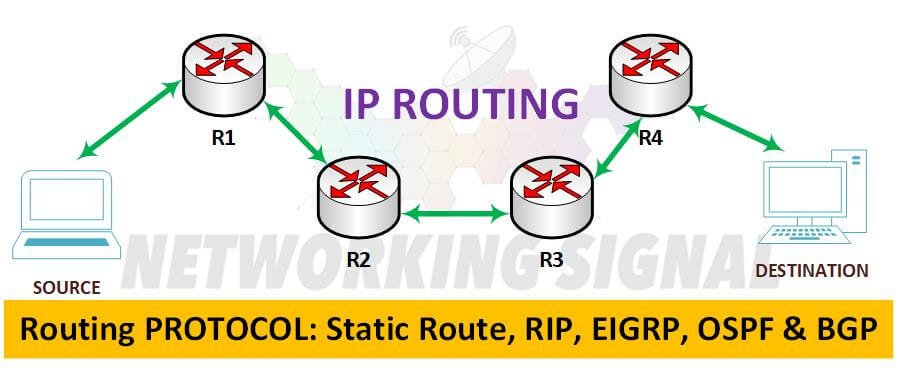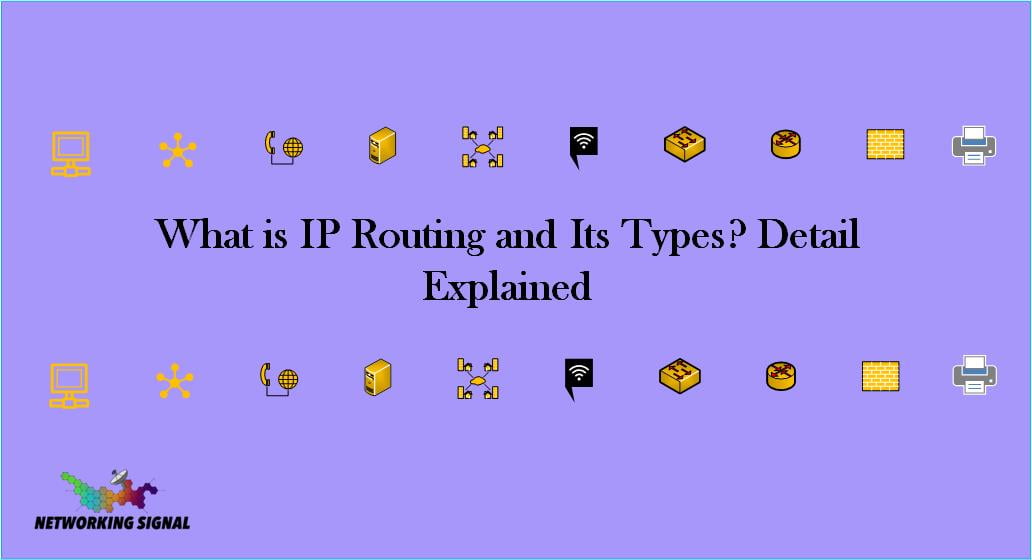What is IP Routing?
IP Routing is the process of forwarding packets from one network to another based on their source and destination IP addresses. It is a key component of any IP network, providing the means for delivering data between different networks and connecting users with the resources they need.
When routing an IP packet, a router must determine how to send it to its destination. This involves looking at the packet’s destination IP address and determining which path it should take to reach its ultimate destination. The router then determines the best route for sending the packet, typically choosing from a list of pre-configured routes known as a routing table.

What are the Types of IP Routing?
There are two main types of IP routing:
- static routing
- dynamic routing
Static routing is the process of manually configuring routes in a router’s memory. This involves setting up explicit paths for packets to follow, and each route must be configured individually by an administrator. As such, it can be quite time-consuming and difficult to manage.
Dynamic routing, on the other hand, is a more automated process that allows routers to share routing information and automatically update routes as needed. Dynamic routing protocols allow routers to communicate with each other and use algorithms to determine the best route for packets at any given time. This makes it much easier for networks to manage large numbers of routes and is generally preferred over static routing.
Which Protocols are Used in Dynamic Routing?
IGP Protocols
IGP (Interior Gateway Protocols) are the most commonly used routing protocols for both static and dynamic routing.
BGP Protocols
BGP (Border Gateway Protocol) is a type of dynamic routing protocol used for interconnecting different networks. BGP is most commonly used between Internet Service Providers (ISPs) to exchange and route traffic across large networks.
Which Types of Routing Are Used in Static Routes?
When using static routing, there are several different types of protocols available. These include Default Routing, Static Routes, and Floating Static Routes.
Default routing is the simplest form of static routing; it sends all packets destined for an unknown destination to a single router or gateway.
Static routes are manually configured on each router in the network and provide explicit instructions for forwarding specific IP addresses.
Floating static routes are similar to static routes, but they provide more control over how packets are routed. With floating static routes, administrators can specify that certain packets take a certain path if the usual route is unavailable.
Why is IP routing needed?
IP routing is necessary for the successful transmission of data over IP networks. Without it, devices would not be able to efficiently and reliably send packets to their intended destination.
By utilizing either dynamic or static routing protocols, routers can determine the best path for packets based on their source and destination addresses, and this allows users to access resources located in different networks.
Which IP Routing is Best?
The best type of IP routing depends on the individual needs of the network. Static routing may be suitable for networks with limited resources and a small number of routes, while dynamic routing is better suited to larger networks that need to dynamically update their routing tables. Ultimately, it’s important to choose an IP routing protocol that meets the specific requirements of the network.
Can We Do IP Routing Without a Router?
No, IP routing requires a router to process and forward packets. Routers use routing protocols to determine the best path for packets, so without a router, it is not possible to do IP routing.
Why?
A router is necessary for IP routing because it analyzes the destination address of each packet and determines which path to send the packet on. This allows packets to be efficiently routed from one network to another, ensuring that they reach their intended destination. Without a router, it would not be possible to do IP routing since there would be no way for packets to be routed from one network to another.
But how we can do it?
With the help of a Firewall or Switch. A firewall can be used to route packets between two networks, while a switch can be used to route traffic within a single network. Both firewalls and switches have the necessary routing capabilities to forward packets based on their destination address.

